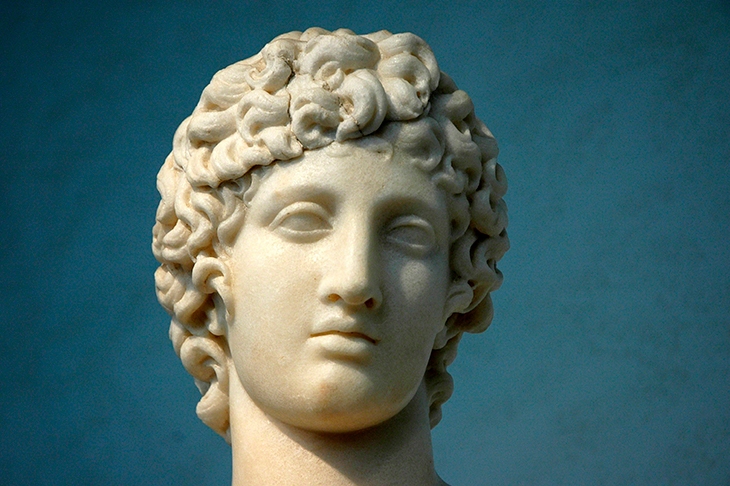In the 1930s curators at the British Museum, under orders from Lord Duveen, a generous donor, scoured and hacked at the friezes and statues of their Parthenon collection. They were trying to remove the smudges and stains thought to be discolouration, to restore the marbles to their original colour — white. But it wasn’t discolouration; it was paint. Though the idea was rejected for years, an arsenal of new technologies — infrared, ultraviolet, X-ray and chemical analysis — has since established that classical sculpture was slathered with the stuff.
Though polychromy — the art of painting statues and architecture — was finally accepted in the 1970s, it was proposed over a century before Duveen’s men picked up their chisels. More than just unknowing, David Mountain explains, it was the rejection by academics of fact and an aesthetic objection to the ‘savagery of colour’ in favour of the ‘more beautiful’ white body. This ignorance of polychromy, wilful or otherwise, combined with racialised politics, saw anatomists and phrenologists describe classical sculpture as the ‘holotype of the white race in the 19th century’. Even now the American Identity Movement (which wants to keep American identity white and European) uses the Apollo Belvedere on pamphlets.
History is the means by which we justify the present. Societies use it to assert their identity and to show the extent of their progress. The ignorance of past historians and writers allowed the proliferation of mythologised historical assumptions — in Mountain’s study Eurocentric, national, Great Man histories (and he throws in crystal skulls for good measure). With the use of new technologies and the application of a scientific, evidence-based methodology to history, Mountain asserts, ideological bias can be removed from our interpretation of the past and show history to be the ‘glorious mess’ that it really is.








Comments
Join the debate for just £1 a month
Be part of the conversation with other Spectator readers by getting your first three months for £3.
UNLOCK ACCESS Just £1 a monthAlready a subscriber? Log in